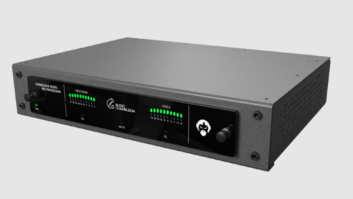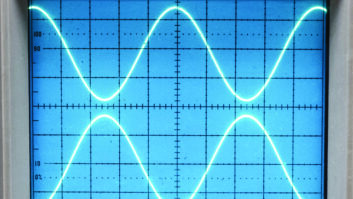It is rare nowadays to find a single-station operation. Even in small markets I encounter groups of radio stations all under the same studio roof.
Most such groups use a single EAS encoder/decoder unit with a relay system to interrupt audio for announcements on all of the stations at that location. I have built many audio relay panels for EAS systems to do just that. It is not difficult.
A relay is used to interrupt normal audio for each radio station and replace it with EAS audio. The relay coils are controlled by an EAS generator. Just keep adding relays as you add radio stations to a single EAS unit. They can all fire simultaneously or one at a time if there are some switches to limit the number of stations during a weekly or monthly test.
(click thumbnail)
(click thumbnail)
An interesting twist comes when there is a weather warning that is not covered by EAS and must get on the air on all of the stations … probably simultaneously. If you have your thinking cap on, you will realize that those same audio relays can be used to do this job too. The difference is which audio source is used to feed audio to those transmitters.
Loaded
A simple design modification will add a relay that either lets the EAS system run its announcement or pulls in to take audio from one “master control” studio and feed all transmitters. Key here are the FCC rules that require EAS audio to take precedence over all other station audio. The system must failsafe to EAS regardless of what else is happening or what the program director might want to happen in the facility.
One of the technical hurdles is that one audio source might be required to feed six audio processors. If each of those processors is set to terminate the incoming audio with 600 ohms impedance, you could have a problem. A 600 ohm audio source will be loaded down to 100 ohms with a noticeable drop in audio level. Most audio processors have a jumper option to select a “bridging” input, which is usually 10,000 ohms. If you have six 10,000 ohm loads in parallel, the resulting load is only 1667 ohms. It would take 17 such audio processor loads to bring the combined parallel impedance down to 600 ohms.
For perspective, the 600 ohm standard is from many years ago when audio consoles had output transformers that needed a 600 ohm load in order to achieve good frequency response. Active balanced circuits today do not need a load and are happy with 600 ohms or more of termination. For that matter, they perform just as well with no load.
I remember installing an all-station take-over panel at a station a while back. It was after 5 p.m. by the time the job was done. After a look around, it became apparent that I was the only one left in a building with six radio stations. There was a gleam in my eye. Should I flip the switch and be heard by everyone in town? Hmmmm … I’d always wanted to be an announcer on the radio!
(click thumbnail)
(click thumbnail)
Well, since radio waves travel at the speed of light, the answer is probably halfway to Alpha Centauri by now.
Pencil and paper
Back to the subject at hand. My recommendation on custom-building an interface panel is to draw a schematic diagram and keep it in the station engineering records. You can do it with pencil and paper as long as there is some kind of logical information trail. That will help future engineers understand what you have created. Do neat work and label everything. It just makes good engineering sense.
There are those who do not have the time, skill, patience or tools to construct such an interface. In that situation, I build such devices in my shop and ship them out for engineers to install. Yes, complete schematics are included.
The author wrote about “Solving the Case of Tower vs. Tower” in the March 1 issue. For more good ideas, visit radioworld.com and click on the Tech Tips tab under News & Technology.
Mark Persons, W0MH, is a Certified Professional Broadcast Engineer and has more than 30 years experience. His website is www.mwpersons.com.
















